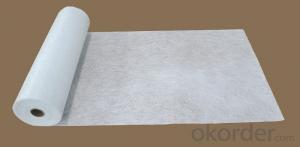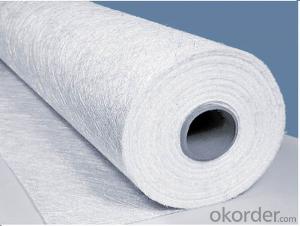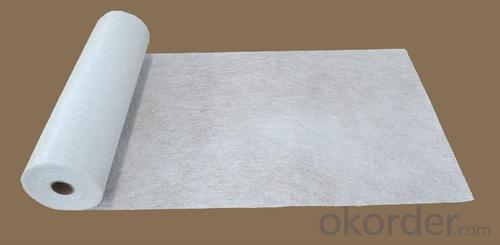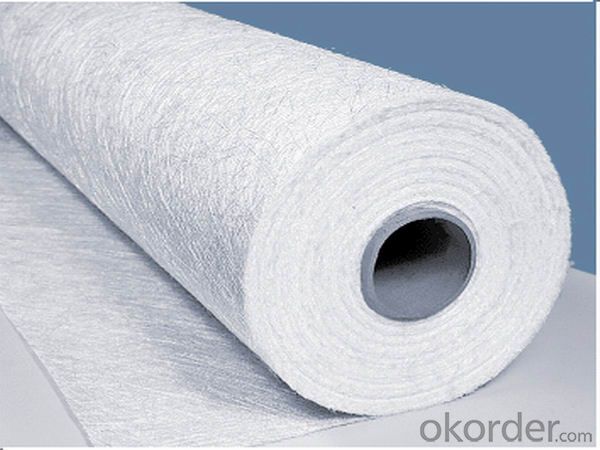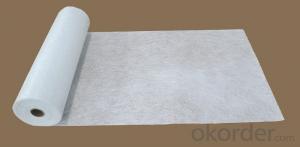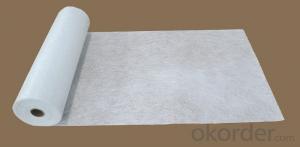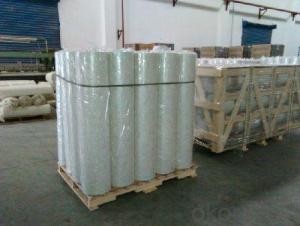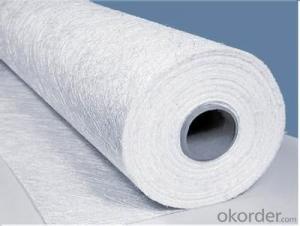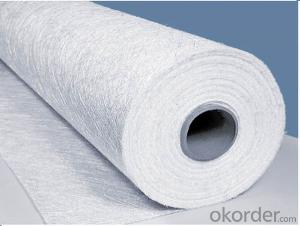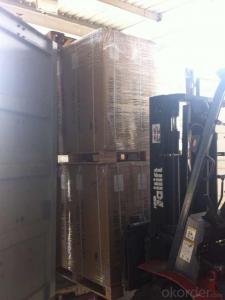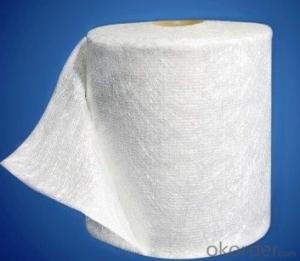Fiberglass Mat Tissue E-Glass Fiber Chopped Strand Mat (Powder Bonded)
- Loading Port:
- Shanghai
- Payment Terms:
- TT or LC
- Min Order Qty:
- 20000 kg
- Supply Capability:
- 200000 kg/month
OKorder Service Pledge
OKorder Financial Service
You Might Also Like
Brief Introduction
Chopped strand mat (or CSM as it is often known) is the most widely used of all composite reinforcement materials.
Short strands of glass are randomly scattered and bound to create a mat which can then be wetted out with resin and used as a general purpose reinforcement for traditional fibreglass (GRP/FRP) moulds or parts.
Product Features:
1. Fast Wet-out
2. Even thickness
3. High mechanical strength
4. Excellent wet strength retention
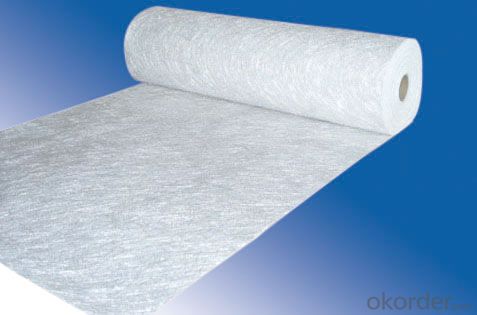
Product Specifications: Property Area Weight Moisture Content Size Content Breakage Strength Width (%) (%) (%) (N) (mm) Property IS03374 ISO3344 ISO1887 ISO3342 EMC80P ±7.5 ≤0.20 8-12 ≥40 50-3300 EMC100P ≥40 EMC120P ≥50 EMC150P 4-8 ≥50 EMC180P ≥60 EMC200P ≥60 EMC225P ≥60 EMC300P 3-4 ≥90 EMC450P ≥120 EMC600P ≥150 EMC900P ≥200
Special specification can be produce according to customer requirements.
Deliverytime
15-20days after received deposit.
Packaging
Plastic bag packing, 2 / 4 / 6 / 8 rolls in one carton box,then tray.
Other terms
We accept the CUSTOMIZATION. OEM is our strength.(spec, color, packing,etc)
- Q: What is the tear resistance of fiberglass mat tissue?
- The tear resistance of fiberglass mat tissue refers to its ability to withstand tearing or ripping when subjected to mechanical stress or force. Fiberglass mat tissue is known for its high tear resistance due to its strong and durable nature. The tear resistance of fiberglass mat tissue is typically measured and reported in terms of its tear strength, which is a measure of the force required to tear the material. This tear strength is determined through standardized testing methods, such as the Elmendorf tear test or the tongue tear test. The tear resistance of fiberglass mat tissue can vary depending on factors such as the thickness, density, and composition of the material. However, overall, fiberglass mat tissue is known to have excellent tear resistance properties, making it an ideal choice for applications where durability and strength are required, such as in the construction industry for reinforcing materials or in the manufacturing of composite materials.
- Q: What is fiberglass mat tissue?
- Fiberglass mat tissue is a non-woven material made from fine glass fibers that are randomly laid and bonded together. It serves as a reinforcement material in various applications, providing strength, durability, and improved mechanical properties to the final product.
- Q: Is fiberglass mat tissue resistant to vibrations?
- Indeed, vibrations do not pose a threat to fiberglass mat tissue. Renowned for its remarkable tensile strength and enduring nature, fiberglass possesses the capability to endure mechanical strains and vibrations. The tightly interwoven fibers within the mat tissue ensure exceptional robustness and steadiness. Thus, fiberglass mat tissue emerges as the perfect substance for domains where vibrations demand attention, including construction, aerospace, and automotive sectors. Moreover, the material's insulation qualities contribute to its enhanced resilience against vibrations.
- Q: How does fiberglass mat tissue compare to other types of insulation materials?
- Fiberglass mat tissue stands out as an insulation material with distinct characteristics and benefits when compared to other options. To begin with, its thermal insulation properties are remarkable. With its low thermal conductivity, it effectively minimizes heat transfer between the inside and outside of buildings. As a result, it helps maintain cooler temperatures in summer and warmer temperatures in winter, leading to energy savings and enhanced comfort. Moreover, fiberglass mat tissue excels in sound insulation. It effectively reduces noise transmission through walls and floors, creating a calm and peaceful indoor environment. This is particularly advantageous in commercial buildings, where noise reduction plays a vital role in productivity and customer satisfaction. Notably, fiberglass mat tissue is lightweight and flexible, making it easy to handle and install. It can be easily tailored to fit around obstacles such as pipes and ducts, ensuring a tight and efficient insulation barrier. This simplifies installation, saving time and labor costs during construction or renovation projects. Another significant advantage of fiberglass mat tissue is its fire resistance. As a non-combustible material, it does not contribute to the spread of fire. This is especially crucial in buildings prioritizing fire safety, such as hospitals, schools, and residential properties. Furthermore, fiberglass mat tissue is durable and long-lasting. It does not degrade or lose its insulation properties over time, guaranteeing consistent energy efficiency and performance for many years. This durability makes it a cost-effective choice, reducing the need for frequent replacement or maintenance. Lastly, fiberglass mat tissue is environmentally friendly. It is manufactured using recycled glass and sand, decreasing the demand for raw materials. Additionally, it is recyclable at the end of its lifespan, reducing waste and promoting sustainability. In conclusion, fiberglass mat tissue offers exceptional thermal and sound insulation, effortless installation, fire resistance, durability, and environmental benefits. While other insulation materials may present their own advantages, fiberglass mat tissue remains a versatile and reliable option for diverse applications.
- Q: Can fiberglass mat tissue be used for insulation in pharmaceutical storage areas?
- No, fiberglass mat tissue is not suitable for insulation in pharmaceutical storage areas. This material may release particles or fibers that can contaminate the pharmaceutical products, which could compromise their quality and safety. It's essential to use insulation materials that are specifically designed and approved for pharmaceutical storage areas to ensure optimal conditions and adherence to regulatory standards.
- Q: What are the different surface textures available for fiberglass mat tissue?
- Fiberglass mat tissue offers various surface textures for different purposes. One popular option is a sleek and polished smooth surface, achieved through the use of a smooth roller or mold during manufacturing. This texture is commonly used for applications that require a sophisticated finish. Another choice is a coarse or rough surface, suitable for applications that need better adhesion. It is accomplished by employing a textured roller or mold during manufacturing, resulting in a surface with small bumps or ridges that increase surface area for improved bonding with adhesives or coatings. A third option is a patterned or embossed surface, used in applications that require aesthetic appeal or enhanced grip. This texture is achieved by employing a patterned roller or mold, resulting in a surface with raised or recessed designs that can be visually appealing or provide added traction when used in flooring or decking materials. Furthermore, manufacturers have the flexibility to customize the surface texture of fiberglass mat tissue to meet specific requirements. This includes creating textured surfaces with specific patterns or designs tailored to individual needs or preferences. In summary, the diverse surface textures available for fiberglass mat tissue offer a wide range of applications, providing choices for smooth finishes, improved adhesion, aesthetic appeal, or enhanced grip.
- Q: How does fiberglass mat tissue perform in terms of moisture vapor transmission?
- Fiberglass mat tissue performs poorly in terms of moisture vapor transmission. It has a very low permeability to moisture vapor, making it an effective barrier against moisture penetration. This characteristic makes fiberglass mat tissue ideal for applications where moisture control and prevention are crucial, such as in roofing and insulation materials. The low moisture vapor transmission rate of fiberglass mat tissue helps to maintain the integrity of the structure by preventing moisture buildup, condensation, and potential damage caused by mold or rot.
- Q: What is the flexural strength of fiberglass mat tissue?
- The flexural strength of fiberglass mat tissue refers to its ability to resist bending or flexing without breaking. It is typically high due to the reinforcing properties of the fiberglass material, making it suitable for applications requiring structural integrity and resistance to deformation.
- Q: How does the fiber orientation of fiberglass mat tissue affect its strength?
- The strength of fiberglass mat tissue is heavily influenced by the orientation of its fibers. Fiberglass mat tissue is a composite material consisting of glass fibers that are randomly distributed and held together by a binder material. When the fibers are randomly oriented, the material exhibits isotropic strength properties. This means that it has similar mechanical properties, such as tensile strength and stiffness, in all directions. Random fiber orientation provides an even distribution of load-bearing capability throughout the material, making it resistant to both tensile and compressive forces from any direction. Alternatively, when the fibers are oriented in a specific direction, the material becomes anisotropic. This means that it has directional strength properties. In this case, the material is stronger and stiffer along the direction of the fibers, while its strength decreases in other directions perpendicular to the fiber orientation. This anisotropic behavior is due to the fact that the fibers primarily bear the load, while the binder material provides support and cohesion between the fibers. By manipulating the fiber orientation during manufacturing, it is possible to customize the strength and performance characteristics of fiberglass mat tissue for specific applications. For example, in the construction industry, where strength is required in a particular direction for reinforcing concrete, or in the aerospace industry, where structural components need maximum strength along a specific load path, the fibers can be aligned accordingly. In conclusion, the fiber orientation of fiberglass mat tissue directly impacts its strength. Random fiber orientation results in isotropic strength properties, providing balanced strength in all directions. Alternatively, specific fiber alignment creates anisotropic strength properties, allowing for enhanced strength along the direction of the fibers. This ability to control fiber orientation enables the customization of fiberglass mat tissue to meet the specific strength requirements of different industries and applications.
- Q: What is the thermal stability of fiberglass mat tissue?
- The thermal stability of fiberglass mat tissue is quite high. It can withstand high temperatures without significant degradation or loss of its structural integrity.
Send your message to us
Fiberglass Mat Tissue E-Glass Fiber Chopped Strand Mat (Powder Bonded)
- Loading Port:
- Shanghai
- Payment Terms:
- TT or LC
- Min Order Qty:
- 20000 kg
- Supply Capability:
- 200000 kg/month
OKorder Service Pledge
OKorder Financial Service
Similar products
Hot products
Hot Searches
Related keywords
